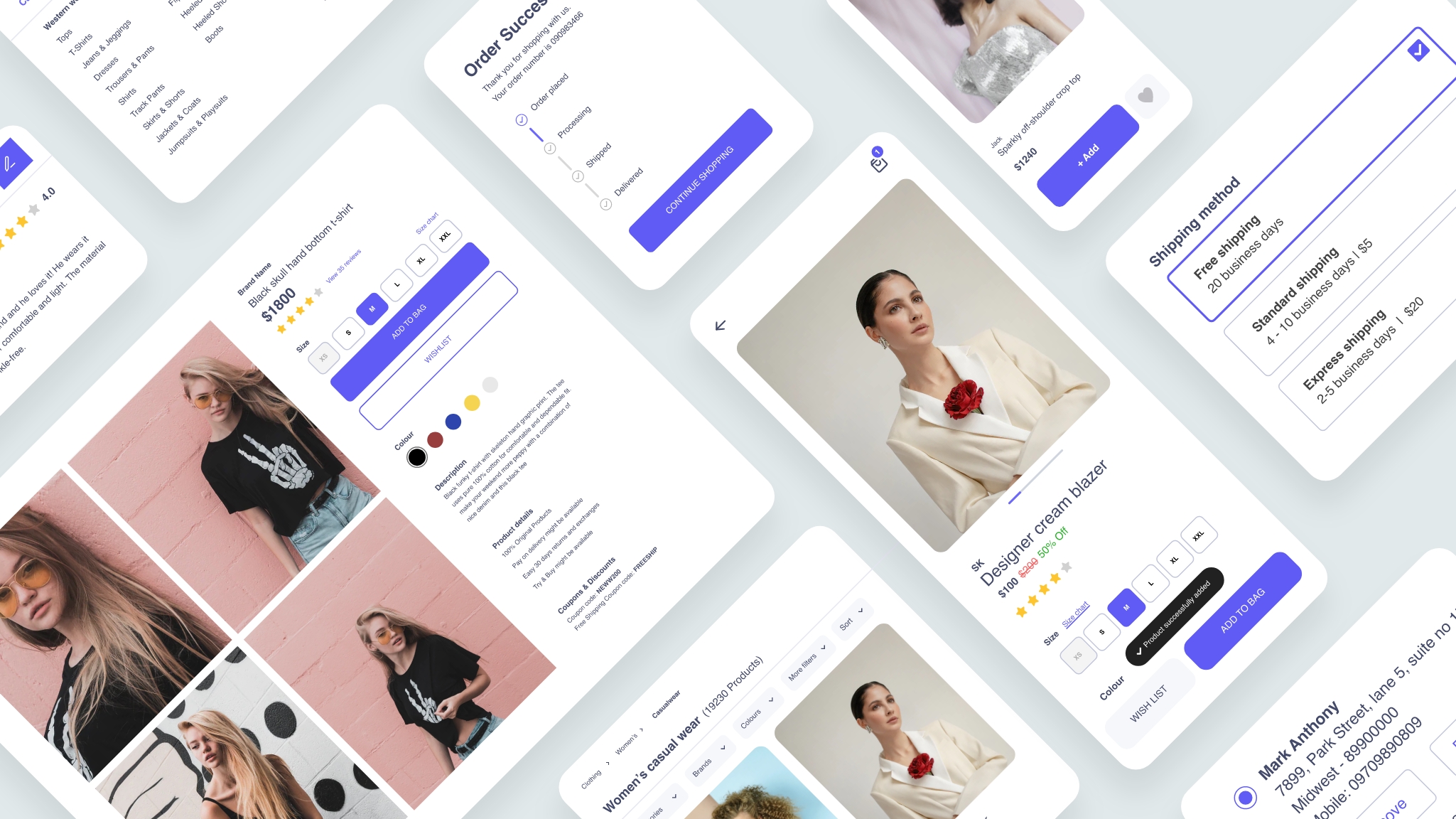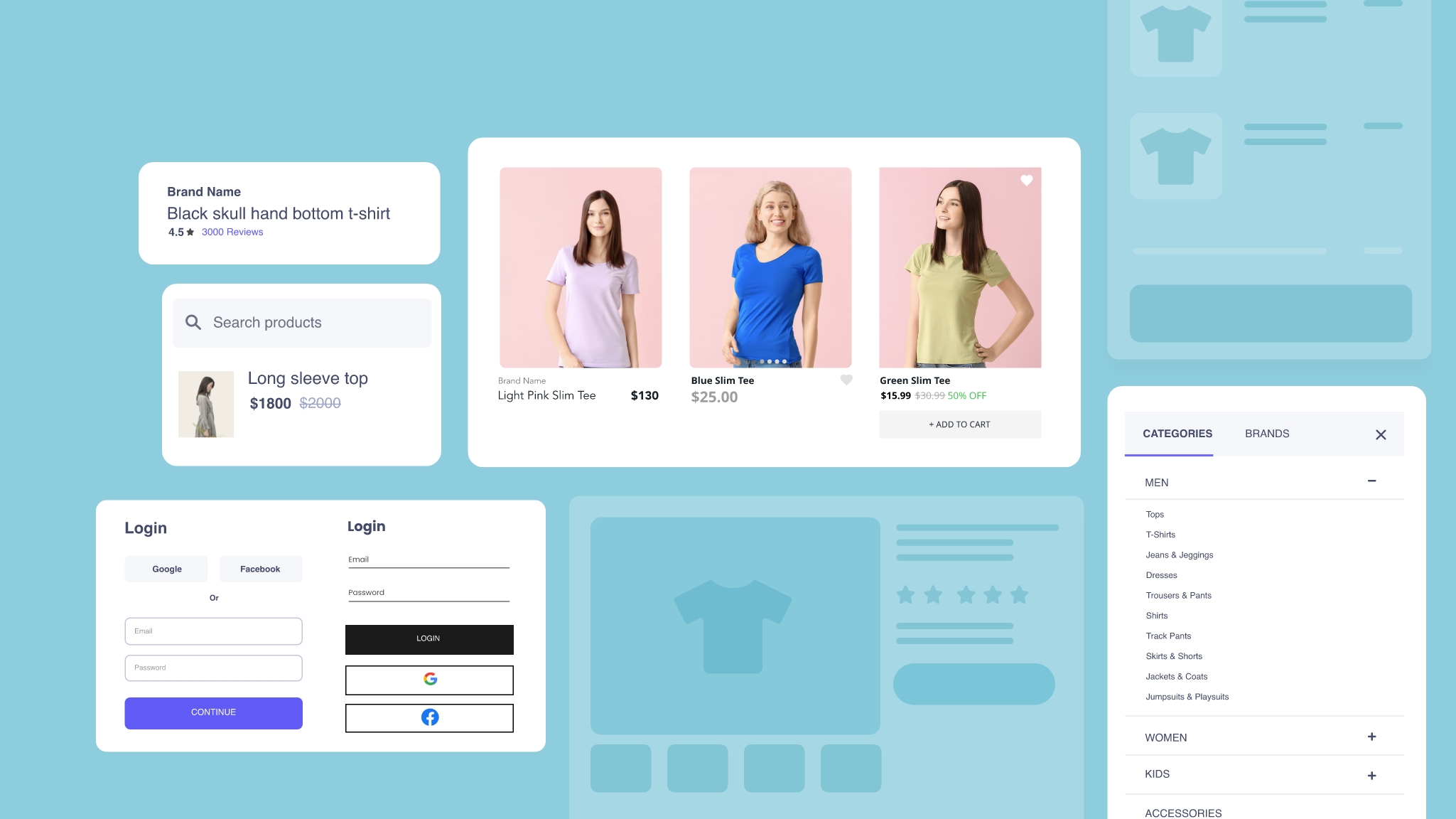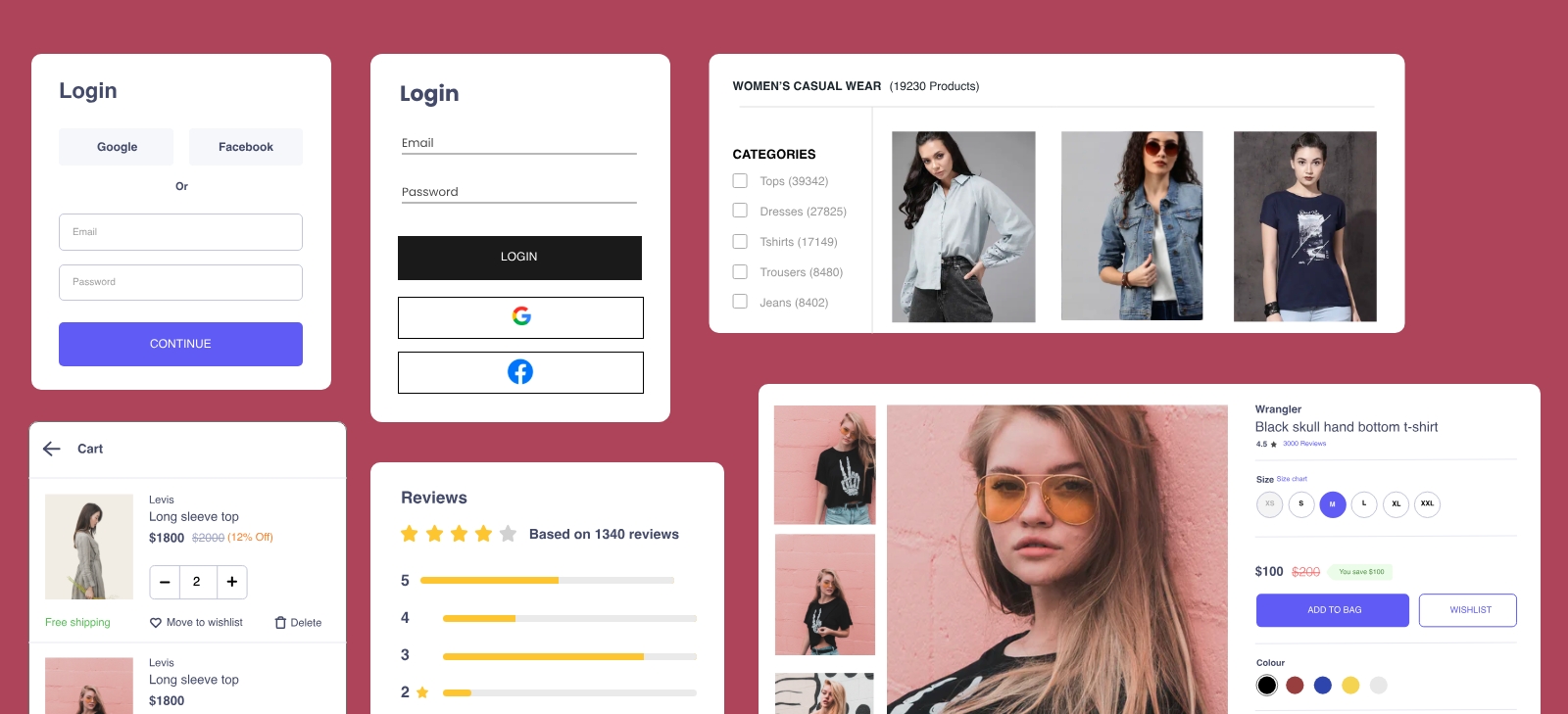Home » Ecommerce PWA Platform
Building an Internal Component Library to Accelerate Magento & PWA Development
An e-commerce agency needed a faster, more efficient way to build Magento & PWA sites. We designed a scalable UI component library that cut development time by 60% and ensured design consistency across projects.


Services
Market Research
Branding
UX Design
Frontend Engineering
Duration
3 months
Domain
E-commerce
Type
B2B SaaS
Introduction
Index had previously delivered several custom e-commerce UX solutions for this client, establishing a strong long-term partnership. As the client continued scaling, they recognized a key inefficiency in their Magento & PWA development workflow—their teams were spending too much time recreating common UI components for every project.
To solve this, they approached us with a challenge:
Can we create a scalable UX framework using PWA that standardizes UI components while ensuring flexibility and efficiency?
This required a deep understanding of their existing processes, Magento Commerce’s capabilities and limitations, and how their team typically worked. Our approach involved:
- Stakeholder discussions to gather insights into workflows, design bottlenecks, and commonly used UI patterns.
- Researching Magento, PWA, and third-party libraries to identify constraints and opportunities.
- Analyzing competitors in similar spaces to understand best practices while ensuring differentiation.
With our strong expertise in e-commerce UX, CX, and CRO, we built an intuitive, reusable component library that optimized the agency’s internal development process and significantly reduced design-to-deployment time.
Our developers struggle with repetitive coding, slow deployments, and no standardized components for Magento & PWA.
The Challenge: Repetitive UI Development Slowing Down Project Timelines
The client, a leading e-commerce agency specializing in Magento & PWA, was facing significant inefficiencies in their development process. Each time they onboarded a new client, their developers had to recreate common UI components from scratch, leading to:
- Inconsistent designs across projects
- Longer development cycles
- Higher resource costs and lower efficiency
To solve this, they needed a centralized UI component library—a pre-built, reusable system that would streamline development, improve design consistency, and reduce repetitive coding efforts.
To solve this, they needed a centralized UI component library—a pre-built, reusable system that would streamline development, improve design consistency, and reduce repetitive coding efforts.

Step 1: Discovery & UX Strategy
We started by immersing ourselves in the agency’s internal workflow to identify inefficiencies and areas for improvement. Our research focused on:
- Understanding how their teams work – What processes were slowing down UI development? What components were being repeatedly built from scratch?
- Assessing Magento Commerce & PWA limitations – Could we build completely independent components, or were there technical constraints?
- Mapping the most used UI components – Which design elements appeared in most projects (e.g., product grids, checkout flows, category filters)?
- Evaluating competitive solutions – Studying platforms like Tailwind UI, Builder.io, and Webflow to identify gaps and opportunities.
Key Insight: The most commonly used service was fashion e-commerce, making it the ideal base for structuring the library.
Key Deliverables
✅ UX Strategy Document
✅ Component Prioritization Plan
✅ Competitive Benchmarking Report
Step 2: Information Architecture & Structure
With a clear direction, we structured the component library to ensure:
- Logical grouping of UI components – Defined by use case (e.g., Checkout, Product Display, Navigation, Upselling, Forms).
- Scalable organization – The structure allowed future expansion without disrupting existing workflows.
- Seamless integration into projects – Ensuring Magento/PWA teams could adopt and customize components efficiently.
We also designed interactive flows that mapped the end-to-end journey from theme selection to checkout. This ensured that all components worked cohesively and provided a consistent user experience.
Key Deliverables
✅ Information Architecture (IA) Document
✅ Component Grouping Framework
✅ Interactive Flow Maps
Step 3: UI Design & Theming System
To ensure flexibility and creative freedom, we provided the agency with:
- Multiple theme styles – Including Minimal, Modern, and Clean layouts.
- A modular design system – Allowing teams to mix and match components based on project requirements.
- Fully customizable components – Ensuring seamless adaptation to different brand aesthetics.
The UI library included:
✔ Product grids, sliders, and category layouts
✔ Navigation systems and mega menus
✔ Checkout flows with cart, payment, and review steps
✔ Personalization modules (upselling, recommendations, promotions)
✔ Form elements (login, registration, and filters)
Key Deliverables
✅ High-Fidelity UI Designs
✅ Interactive Prototypes
✅ XD-Based Component System
Step 4: Validation & Usability Testing
Before finalizing the component library, we tested it extensively with internal teams. This included:
- Developer testing – Ensuring components were easy to integrate with Magento & PWA.
- Designer testing – Checking if the design system maintained flexibility without compromising consistency.
- Real-world simulation – Using test projects to validate efficiency, scalability, and usability.
Key Learnings & Refinements:
✔ Developers reported a 60% reduction in front-end coding time.
✔ Designers found it easier to maintain brand consistency while offering customization options.
✔ Adjustments were made to improve modularity and responsiveness.
Key Deliverables
✅ Usability Testing Report
✅ Refined UI Components
✅ Customization Guidelines
Developers eliminated repetitive coding and slow deployments with a reusable component library, enabling faster, standardized Magento & PWA development.